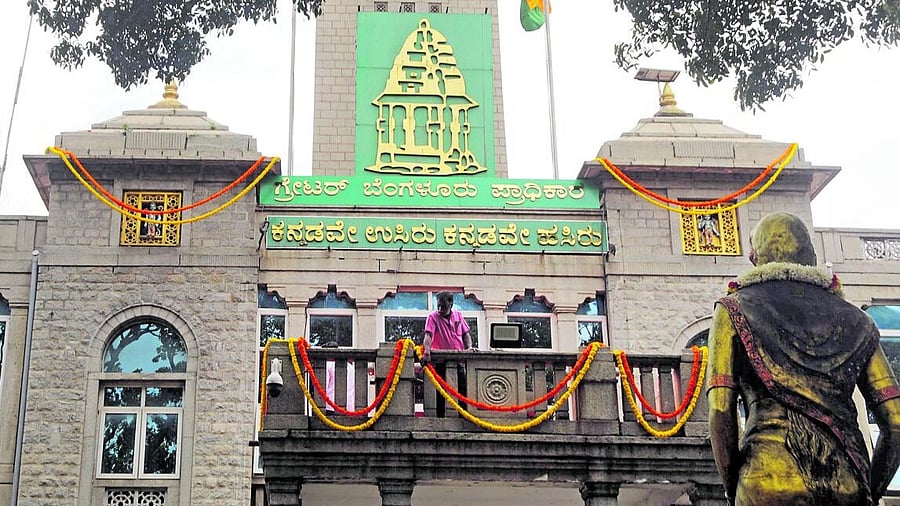
The Greater Bengaluru Authority office.
Credit: DH Photo
At 369, the Greater Bengaluru Authority (GBA), the apex body that oversees the governance of Bengaluru, has the highest number of wards among the seven big cities in the country.
The GBA is one of three tiers in the new governance system in Bengaluru. The other two are the five new city corporations and the ward committees. The GBA, established on May 15, 2025, replacing the Bruhat Bengaluru Mahanagara Palike, became fully operational on September 2, 2025. The overall jurisdictional area of the GBA has remained unchanged at 712 sq km.
On Wednesday, the Karnataka government issued the final notification demarcating wards for the five city corporations. The five corporations will together have 369 wards, a sharp rise from the 198 wards the city had earlier.
How the wards split
Bengaluru Central City Corporation: 63
Bengaluru North City Corporation: 72
Bengaluru South City Corporation: 72
Bengaluru West City Corporation: 112
Bengaluru East City Corporation: 50
227 wards in Mumbai
The civic body of Mumbai, the Brihanmumbai Municipal Corporation (BMC), has 227 electoral wards or constituencies for civic elections. The BMC, India's richest municipal corporation, has a jurisdictional area of 437.71 sq km. The 227 electoral wards are spread across 24 administrative wards.
250 municipal wards in Delhi
In the national capital, the Municipal Corporation of Delhi (MCD) covers an area of 1,397.3 sq km and is divided into 250 municipal wards.
In 2022, the Delhi Municipal Corporation (Amendment) Act was passed and the three previous corporations — North Delhi, South Delhi, and East Delhi municipal corporations — were unified into a single entity. The number of wards was restricted at a maximum of 250, down from the previous total of 272. The MCD area is divided into 12 administrative zones.
144 wards under Kolkata Municipal Corporation
The area under the Kolkata Municipal Corporation (KMC) is divided into 144 electoral wards spread over 206 sq km.
The number of wards went up from 75 to 144 after several former municipalities in peripheral areas were merged with the KMC in 2015. The wards are grouped into 16 boroughs.
200 wards spread over 426 sq km in Chennai
The Greater Chennai Corporation (GCC) has a total of 200 wards spread across 15 zones.
The 15 zones are grouped under three administrative divisions: North, South, and Central. The jurisdiction of the GCC is spread over 426 sq km. The territorial area increased from 174 sq km in 2011 after 42 smaller local bodies were merged into the corporation.
The Greater Chennai Corporation, earlier called Madras Corporation, is the oldest municipal institution in India established in 1688.
Hyderabad and Ahmedabad
The Greater Hyderabad Municipal Corporation (GHMC), covering an area of nearly 650 sq km, is divided into 150 wards. The GHMC is administratively divided into six zones, which are further split into 30 circles and then into 150 wards.
The civic body of Ahmedabad, the Ahmedabad Municipal Corporation, covers an area of 505 sq km and is divided into 48 wards. Each of the 48 wards is represented by four corporators, resulting in a total of 192 seats in the general body. For administrative purposes, the city is divided into seven zones.
